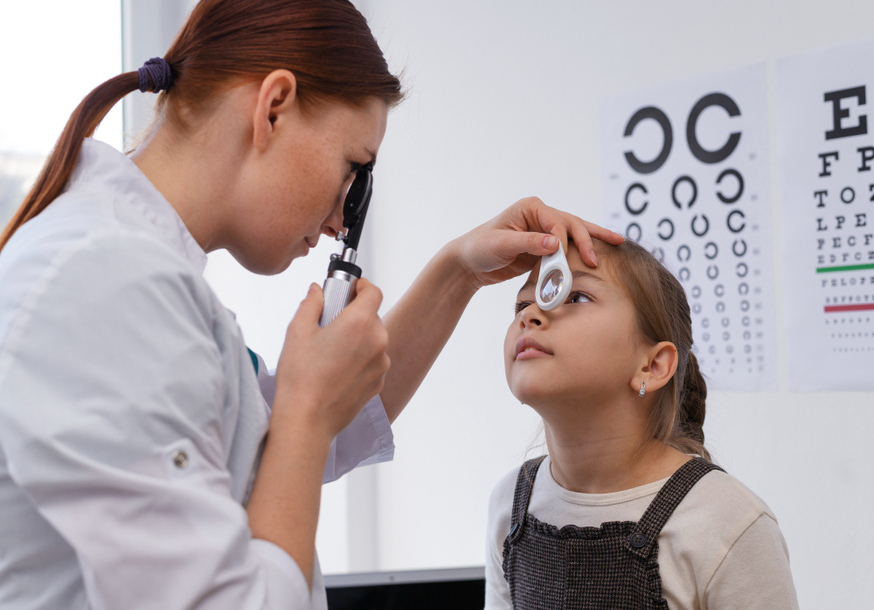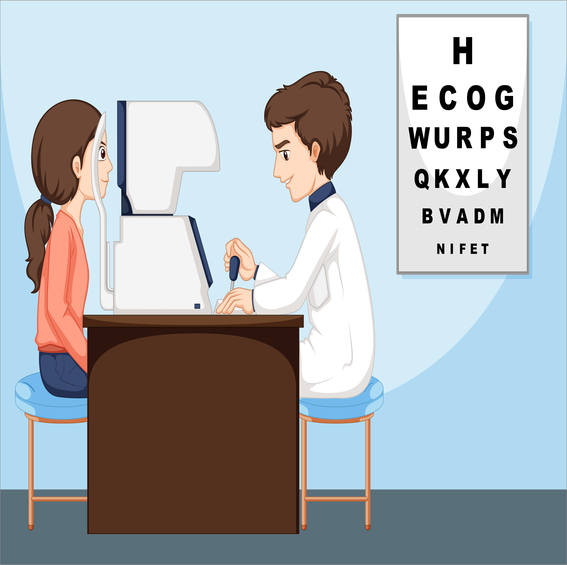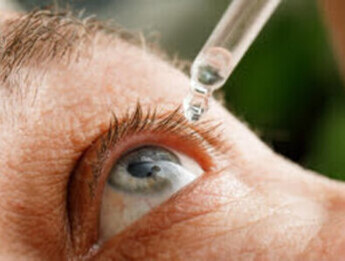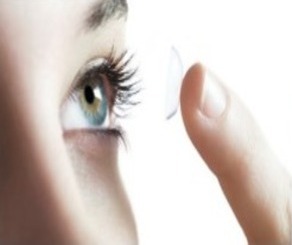Paediatric Ophthalmology
Ensuring the eye health and proper care of children is crucial for their overall development and well-being. Here are key points of information for parents and caregivers regarding children's eye care:
Promoting good eye care habits from an early age sets the foundation for a lifetime of healthy vision. Regular check-ups and proactive measures contribute to the overall well-being and success of children in their academic and personal lives.

Paediatric Ophthalmology
Important information to parents and care givers:
- Regular Eye Examinations: Schedule comprehensive eye exams for children,
starting from infancy. Early detection of eye conditions is essential for timely
intervention.
- Vision Screening at School: Children should undergo regular vision
screenings at school to identify potential vision issues that may affect
academic performance.
- Signs of Vision Problems: Be aware of signs that may indicate vision
problems, such as squinting, rubbing the eyes frequently, tilting the head,
avoiding near or distance tasks, or complaints of headaches.
- Importance of Play and Outdoor Activities: Encourage outdoor activities,
as exposure to natural light is beneficial for visual development. Play and
exploration help develop visual-motor skills.
- Limit Screen Time: Set reasonable limits on screen time for activities
like watching television and using computers, tablets, or smartphones. Follow
the 20-20-20 rule: take a 20-second break every 20 minutes and look at something
20 feet away.
- Proper Lighting: Ensure proper lighting when children are reading or
doing close-up work. Adequate lighting helps reduce eye strain.
- Eye Safety: Emphasize the importance of eye safety, especially during
sports and recreational activities. Provide protective eyewear when necessary.
- Healthy Diet: Encourage a balanced diet rich in nutrients essential for
eye health, including vitamin A, vitamin C, and omega-3 fatty acids. Foods like
carrots, leafy greens, and fish are beneficial.
- Good Hygiene Habits: Teach children good hygiene habits, such as washing
hands to prevent eye infections. Discourage rubbing the eyes with dirty hands.
- Regular Glasses and Contact Lens Care: If prescribed glasses or contact
lenses, ensure they are worn regularly and well-maintained. Teach proper
cleaning and storage habits.
- Address Allergies: Manage allergies promptly, as they can contribute to
eye irritation and discomfort. Consult with healthcare professionals for
appropriate treatment.
- Awareness of Family Eye Health History: Be aware of any family history of
eye conditions, as some eye diseases may have a genetic component. Share this
information with eye care professionals during exams.
- Importance of Sleep: Ensure that children get sufficient sleep, as proper
rest contributes to overall eye health and well-being.
- Educational Support: Work closely with teachers if a child has
vision-related learning difficulties. Proper accommodations and support can
enhance their educational experience.
- Consultation with Eye Care Professionals: If any concerns arise regarding
a child's vision or eye health, promptly consult with a paediatrician or a
paediatric ophthalmologist for a thorough evaluation.
Paediatric eye disease and causes:
Paediatric eye diseases can vary widely, and their symptoms and causes depend on the
specific condition. Here are some common paediatric eye diseases, along with their
typical symptoms and causes:
-
Amblyopia (Lazy Eye):
- Symptoms: Reduced vision in one eye, poor depth perception, eyes not aligning properly.
- Causes: Strabismus (misalignment of the eyes), significant refractive errors, or other factors affecting visual development.
-
Strabismus (Crossed Eyes or Squint):
- Symptoms: Misalignment of the eyes, eyes not working together, double vision.
- Causes: Weak eye muscles, neurological factors, or a family history of strabismus.
-
Refractive Errors:
- Symptoms: Blurred vision, squinting, headaches, difficulty reading or seeing distant objects.
- Causes: Myopia (near-sightedness), hyperopia (farsightedness), astigmatism.
-
Congenital Cataracts:
- Symptoms: Cloudy or white pupil, poor vision, eyes that appear crossed or not aligned.
- Causes: Genetic factors, metabolic disorders, or maternal infections during pregnancy.
-
Congenital Glaucoma:
- Symptoms: Enlarged eyes, light sensitivity, excessive tearing, cloudy corneas.
- Causes: Abnormal development of the eye's drainage system.
-
Retinopathy of Prematurity (ROP):
- Symptoms: Abnormal blood vessels in the retina, retinal detachment, vision problems.
- Causes: Premature birth, low birth weight, exposure to high levels of oxygen.
-
Paediatric Retinal Diseases:
- Symptoms: Floaters, flashes of light, vision loss.
- Causes: Conditions like retinal detachment, retinoblastoma (a rare eye cancer), or inherited retinal diseases.
-
Paediatric Corneal Diseases:
- Symptoms: Eye pain, redness, tearing, blurred vision.
- Causes: Infections, injuries, congenital abnormalities, or corneal dystrophies.
-
Conjunctivitis (Pink Eye):
- Symptoms: Redness, itching, tearing, discharge from the eyes.
- Causes: Viral or bacterial infections, allergies.
-
Childhood Ptosis (Drooping Eyelid):
- Symptoms: One or both eyelids drooping, obstruction of vision.
- Causes: Weakness of the muscles that lift the eyelid, congenital factors, or neurological conditions.
It's important to note that these are general symptoms and causes, and individual cases may vary. If parents or caregivers notice any signs of eye problems in children, it's crucial to seek prompt evaluation by a paediatrician or a paediatric ophthalmologist. Early detection and intervention can be essential in managing paediatric eye diseases and preventing long-term complications. Regular eye check-ups are recommended to ensure the ongoing health of a child's eyes.
What is SQUINT:
Squint, also known as strabismus, is a condition in which the eyes do not align properly. When a person has a squint, one eye may turn inward, outward, upward, or downward while the other eye remains straight. This misalignment can be constant or intermittent and may affect one or both eyes. Squint can occur in children and adults, and it is a common condition that requires attention for proper management.
There are different types of squint, including:
- Esotropia: The eye turns inward, towards the nose.
- Exotropia: The eye turns outward, away from the nose.
- Hypertropia: The eye turns upward.
- Hypotropia: The eye turns downward.
Causes of Squint:Squint can result from various factors, and the causes may include:
- Muscular Imbalance: A weakness or imbalance in the muscles that control eye movement can lead to squint.
- Refractive Errors: Uncorrected refractive errors, such as near-sightedness or farsightedness, can contribute to the development of squint.
- Hereditary Factors: There is often a genetic predisposition for squint, and it may run in families.
- Vision Problems: If there is a significant difference in vision between the two eyes (anisometropia), it can lead to squint.
- Neurological Conditions: Some neurological conditions or injuries affecting the nerves or brain can result in squint.
Symptoms of Squint:
The primary symptom of squint is the noticeable misalignment of the eyes. Other symptoms
may include:
- Double Vision: Especially in cases where the squint is intermittent.
- Eye Strain or Fatigue: Particularly when attempting to focus on objects.
- Headaches: Especially after activities requiring visual concentration.
- Poor Depth Perception: Difficulty judging distances.
Treatment for Squint:
The treatment for squint depends on its underlying cause and severity. Treatment options
may include:
- Prescription Glasses: Correcting refractive errors with glasses may help in some cases.
- Eye Patching: Covering the stronger eye with a patch can be used to strengthen the weaker eye, especially in cases of amblyopia (lazy eye).
- Vision Therapy: Eye exercises and visual activities may be recommended to improve eye coordination and control.
- Surgery: In cases where non-surgical treatments are not sufficient, surgical intervention to adjust the eye muscles may be considered.
Early diagnosis and intervention are crucial, especially in children, as untreated squint can lead to amblyopia or permanent vision impairment. If a squint is suspected, it is essential to consult with an eye care professional for a comprehensive eye examination and appropriate management.
Optometry is a healthcare profession that focuses on the examination, diagnosis, and management of eye and vision-related conditions. Optometrists, also known as Doctors of Optometry (OD), are trained healthcare professionals who provide a range of services aimed at maintaining and improving visual health. They are not medical doctors, but they have earned a Doctor of Optometry degree from an accredited optometry school.
Services rendered by optometrists include:
- Comprehensive Eye Exams: Optometrists conduct thorough eye examinations to assess the overall health of the eyes. These exams can detect refractive errors (such as near-sightedness, farsightedness, and astigmatism), as well as eye diseases and conditions.
- Prescription of Corrective Lenses: Optometrists prescribe eyeglasses or contact lenses to correct refractive errors and improve vision.
- Contact Lens Fitting and Management: Optometrists specialize in fitting and prescribing contact lenses. They assess the eyes to determine the most suitable type of contact lenses and provide guidance on proper use and care.
- Management of Eye Diseases: Optometrists diagnose and manage various eye diseases, including glaucoma, cataracts, macular degeneration, and diabetic retinopathy. They may prescribe medications, provide referrals for surgical interventions, or co-manage with other healthcare professionals as needed.
- Treatment of Eye Conditions: Optometrists can treat a range of eye conditions, such as dry eye syndrome, conjunctivitis (pink eye), and allergies.
- Paediatric Eye Care: Optometrists provide eye care services for children, including paediatric eye exams, vision screenings, and the management of common childhood eye conditions.
- Vision Therapy: Optometrists offer vision therapy, a customized program of eye exercises and activities designed to improve specific visual skills, such as eye tracking, focusing, and coordination.
- Low Vision Rehabilitation: For individuals with low vision due to conditions like macular degeneration, optometrists can provide rehabilitation services and recommend low vision aids to maximize remaining vision.
- Preventive Eye Care: Optometrists emphasize preventive care to maintain eye health and prevent future vision problems. This includes lifestyle recommendations and advice on protecting the eyes from environmental factors.
- Emergency Eye Care: Optometrists provide emergency eye care for issues such as eye injuries, foreign body removal, and sudden changes in vision.
It's important to note that optometrists work closely with other healthcare professionals, including ophthalmologists (medical doctors specializing in eye care and surgery), to ensure comprehensive eye care for patients. Regular eye exams with an optometrist are essential for maintaining good vision and detecting potential eye problems early on.
Book an appointment
Please fill in the form below and we will soon call you back.



